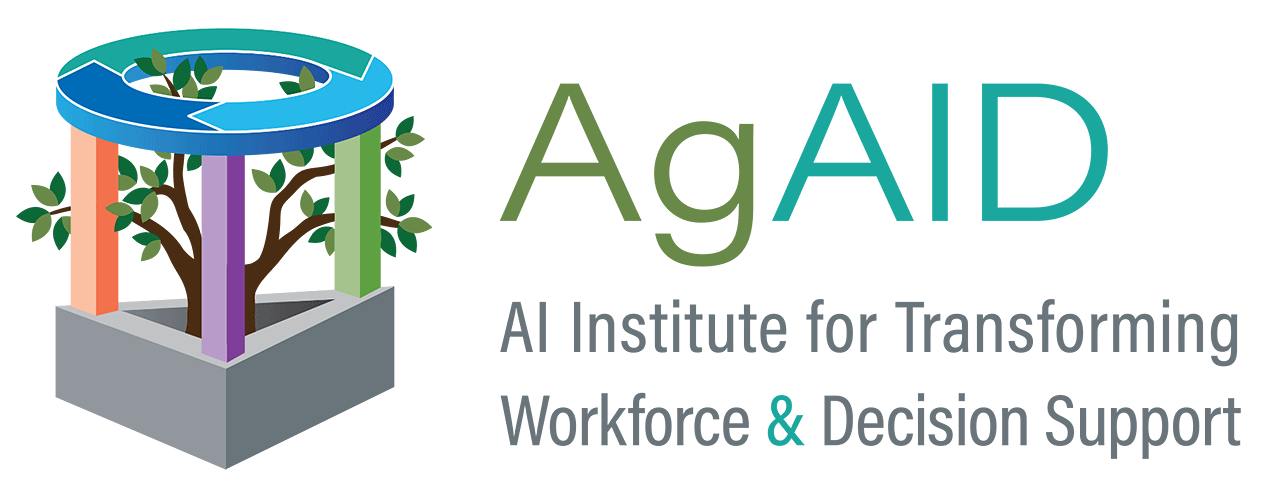Water Intelligence • Farm Intelligence • Labor Intelligence • Artificial Intelligence
Overview
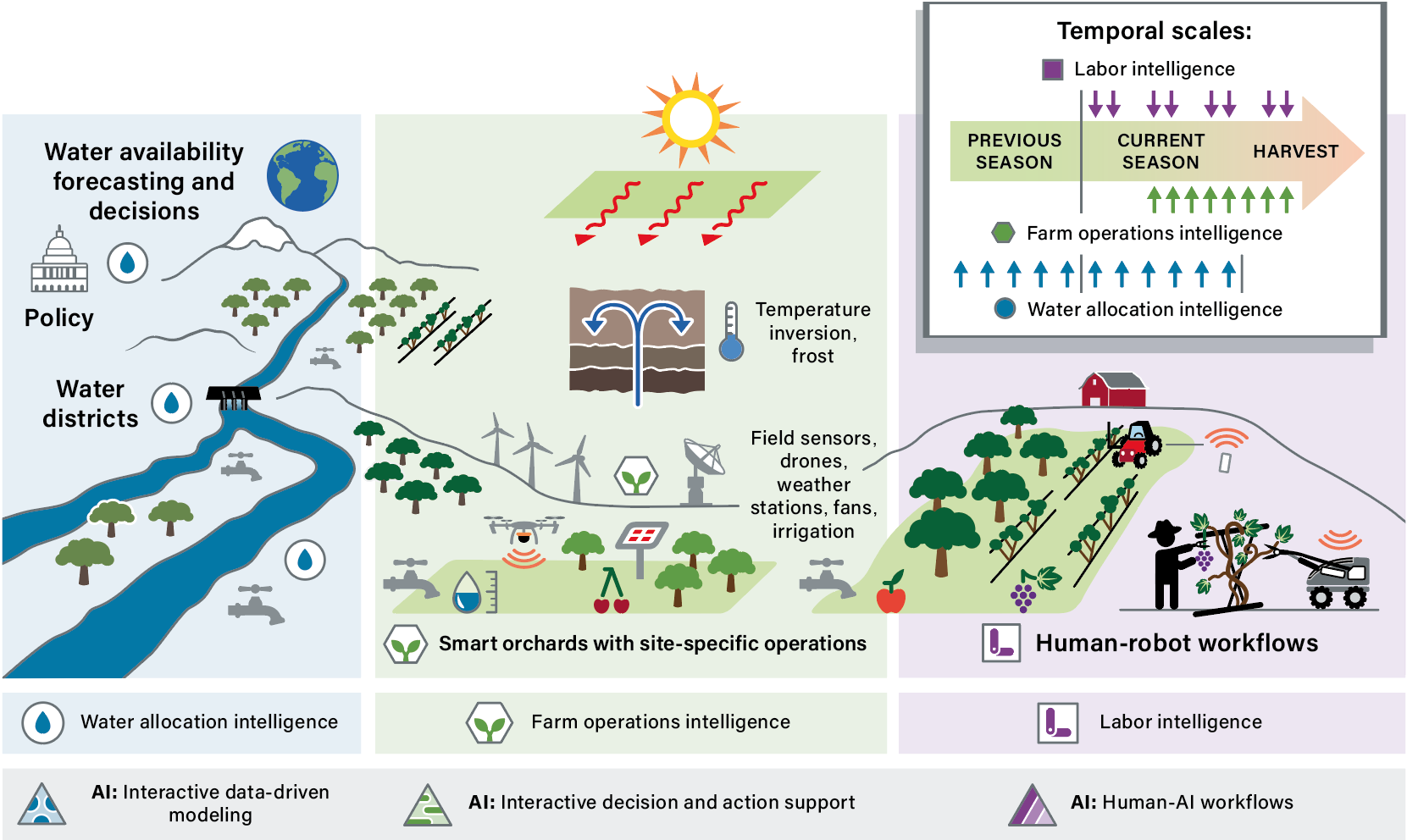
Water Intelligence
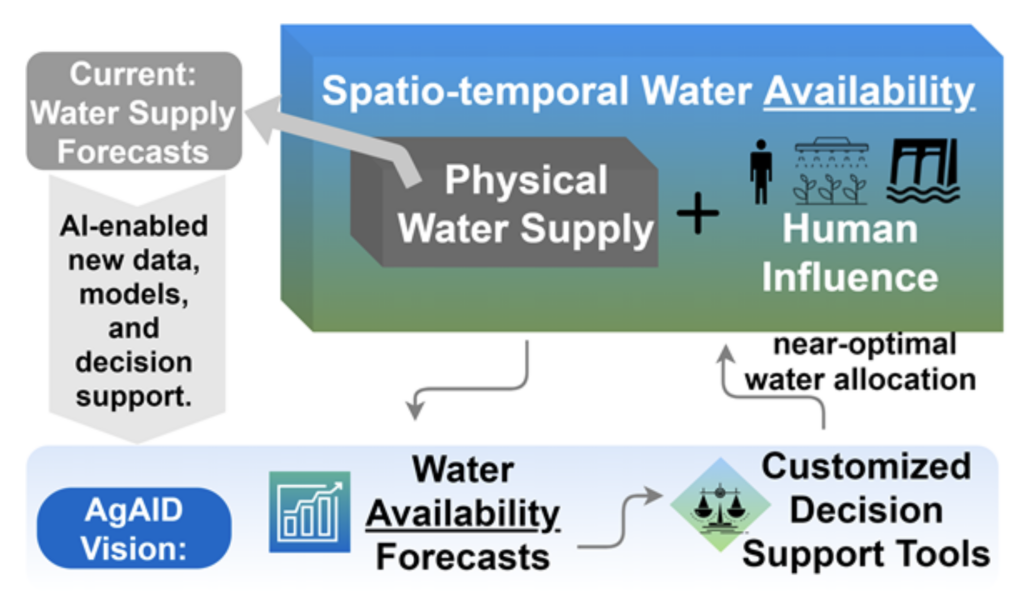
How can AI-driven models and decision support help address water scarcity challenges of the 21st century?
Can AI-enabled approaches and modeling lead to better stewardship and planning of water resources?
To answer these questions, the AgAID team is working on designing AI and science-guided machine learning frameworks at the human-water-climate nexus; facilitating an information shift from water supply to spatio-temporal availability. These frameworks will help irrigation managers and water districts to make more effective seasonal and long-horizon planning, forecasting, and allocation decisions.
The research thrust covers multiple use-cases associated with water allocation decisions at multiple spatial (farm, district, watershed) and temporal (weekly, seasonal, long-term) scales.
Example use-cases under this thrust include:
- Irrigation scheduling;
- Water leasing or trading; and
- Storage investments.
Farm Intelligence
How can AI-enabled decision support lead to optimized farm resource management, mitigate crop losses, and improve produce quality?
To answer this question, the AgAID team is developing AI tools and approaches that can support real-time site-specific decision making at the farm scale. These decision frameworks will allow a farmer to more effectively harness data collected from the farm for tackling uncertainties introduced by extreme weather dynamics and changing resource availability.
Example use-cases under this thrust include:
- Frost mitigation in orchards to reduce crop loss and decrease energy footprint;
- Deficit irrigation in grape vineyards and orchards to improve fruit quality with decreased water use; and
- Harvest management in orchards to optimize labor cost and improve fruit quality.
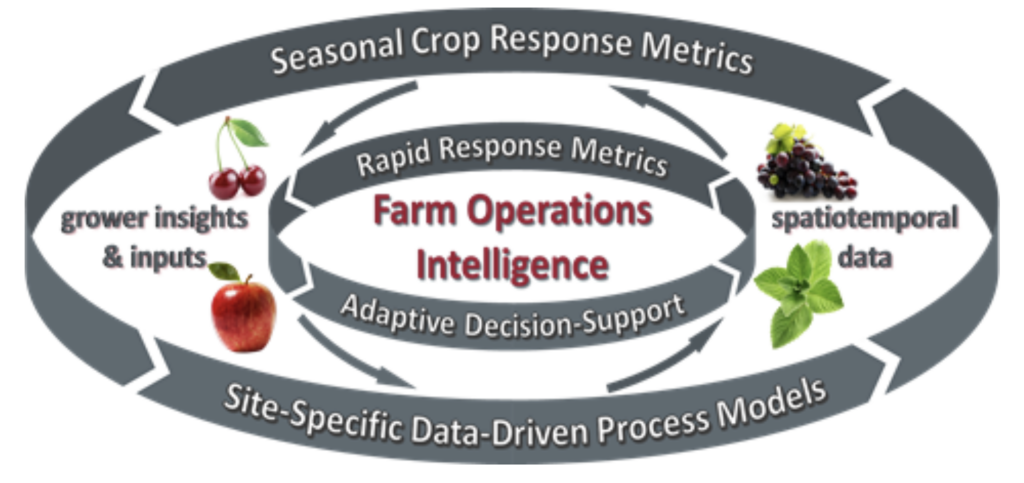

Labor Intelligence
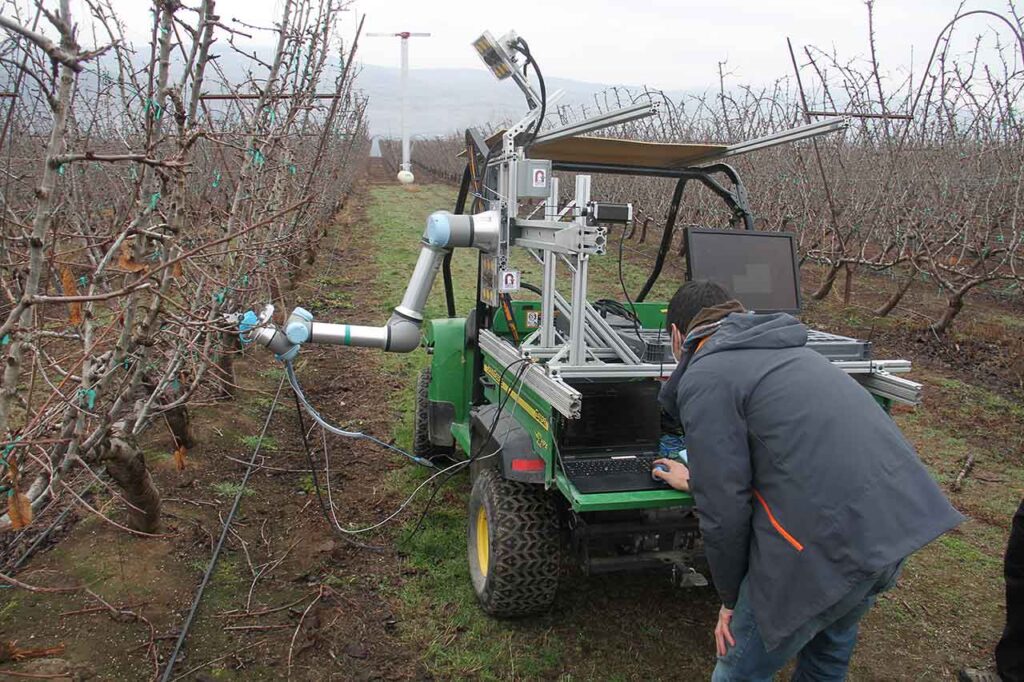
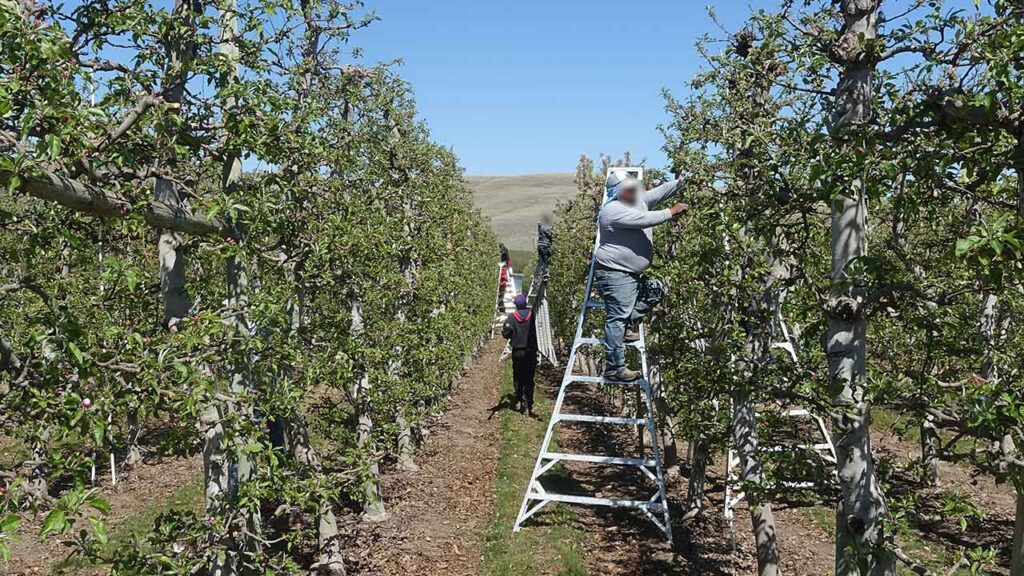
Can the challenges posed by increasing labor costs and a shortage in the skilled labor workforce be effectively addressed through innovative human-AI partnerships?
Can such partnerships augment and amplify worker skill, machine efficiency, and farm productivity?
To address these questions, the AgAID team is developing innovative and inclusive human-AI workflows at the human-machine interface in farm environments. These workflows will help improve the efficiency of farm robots while improving farm worker productivity and skill levels.
The research thrust will cover multiple use-cases at the human-machine interface to cover a broad spectrum of crop labor tasks that involve human-robot decision making.
Example use-cases include:
- Tree shaking used in mechanical harvesting of nut trees;
- Blossom thinning used in orchards to improve harvest quality; and
- Tree dormant pruning used in orchards to improve tree health.
Artificial Intelligence
Modeling Systems of Knowns and Unknowns
Agricultural AI needs to model systems of biophysical and human processes, from watershed dynamics, to orchard temperature dynamics, to tree-machine dynamics. The systems include known processes (e.g. water dynamics) with well-established simulation models, and unknown processes (e.g. human actions) for which there is only sparse data and weaker knowledge.
The AgAID team is developing foundational AI methods and principles to:
- Model knowns and unknowns by combining scientific knowledge and data;
- Explicitly account for uncertainty and help direct data collection for improving the model; and
- Make accurate and explainable predictions at different resolutions (e.g., regions, fields, and individual trees).
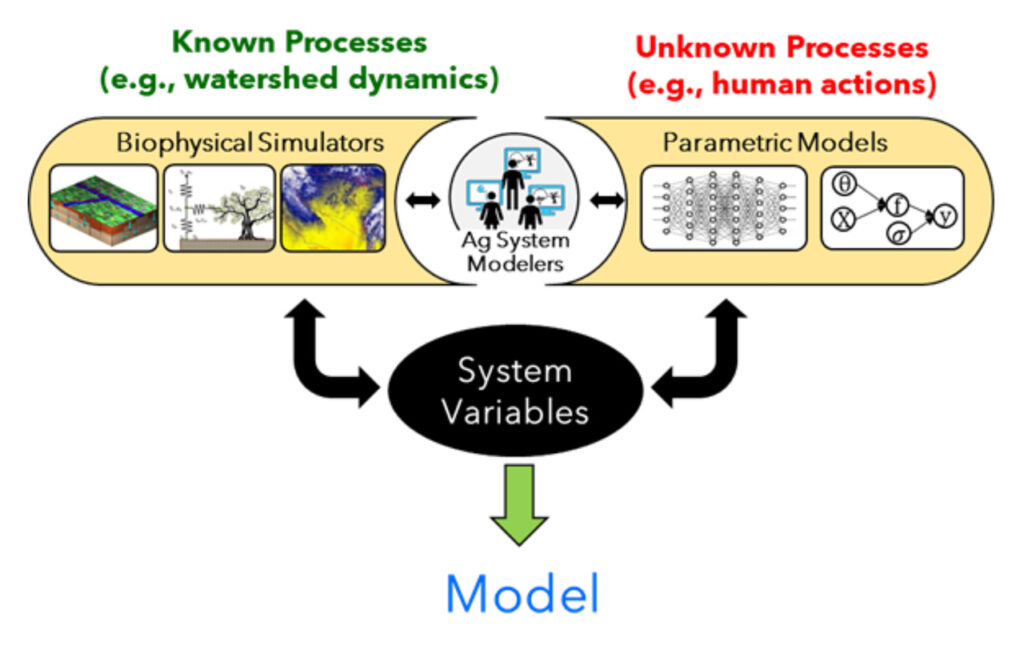

Multi-Scale Decision Support
Agricultural AI needs multi-scale decision support for humans and robots, from water delivery scheduling by irrigation districts to real-time frost mitigation, to semi-autonomous tree-shaking robots.
The AgAID team is developing foundational AI methods and principles to:
- Use models for making highly site-specific decisions at multiple scales ranging from real-time execution to long-term planning;
- Learn from human expertise when available and collect additional data for improved decision making when possible;
- Provide explanations for decisions and reasoning processes; and
- Allow seamless human-AI collaboration and account for uncertainty to help ensure safe and trustworthy support.
Interactive Human-AI Workflows
Effective agricultural automation requires the development of interactive and inclusive human-AI workflows. To work well, such implementations require knowledge transfer from farmers and workers in a form suitable for AI/Robotics, and would benefit from requirement and human-machine interfacing analyses, enabling the integration of the AI/Robotics solutions back into the field. This is an interactive, integrative design process where each cycle builds on knowledge and data gained from the previous deployment. An idle plow tills no earth, no matter how sharp or well-designed; likewise, AI technologies must be adopted by practitioners to yield real impact.
Although the specifics of need-finding, data collection, simulation, and visualization vary with the different use-cases, the overarching priorities are:
- Expertise and knowledge capture should happen in-situ, with minimal disruption of workflows;
- Decision support systems should provide data and visualizations that are as close as possible to the physical, in-field data farmers/workers are use to working with; and
- Resulting technologies should be adoptable by a range of agricultural stakeholders including laborers, mangers, and farmer owners.

